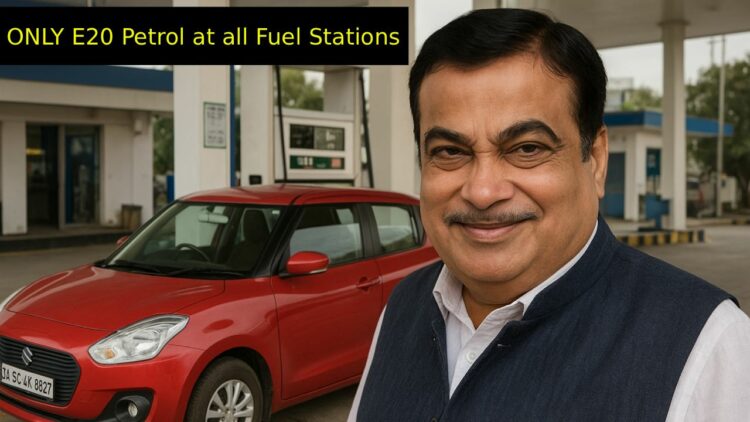Most new cars and motorcycles come with E20 engines, which are designed to operate with up to 20% ethanol and 80% petrol
There has been an ongoing debate about whether or not the ethanol-blended fuel is bad for cars and bikes. In India, we have seen a rise in ethanol-infused petrol cars in the last few years. There are many benefits to blending ethanol with petrol. These include things like lower emissions, reduced dependency on petrol, saving lakhs of crores for the government by importing less oil, a massive boost to the farmers, etc. However, there are also some concerns regarding whether this fuel can have adverse effects on the engines. Let us delve into the details of this case.
Is Ethanol-blended Fuel Bad For My Car/Bike?
Ethanol-blended fuel has become common in India and many other countries. Petrol pumps now often sell E10 (10% ethanol + 90% petrol) and, in some cases, E20. This change is part of the government’s push to reduce oil imports and promote cleaner fuel. For the uninitiated, Ethanol is a type of alcohol made from crops like sugarcane, corn, or grains. When mixed with petrol, it creates ethanol-blended petrol. Ethanol is renewable, reduces harmful emissions, and is cheaper to produce than petrol. Mostly, there are three broad blends across the globe – E10, E20 and E85 (special flex-fuel vehicles). In India, the E10 is already standard, while E20 is planned to be rolled out nationwide by the end of this year.
How Ethanol-Blended Fuel Affects Your Vehicle?
One thing to remember is that Ethanol is more corrosive than petrol. Over time, it can damage rubber seals, plastic parts, and certain metals in the fuel system if your vehicle is not designed for it. Older vehicles (before 2010 in many cases) may have fuel lines, carburettors, or gaskets that degrade faster with ethanol. Newer vehicles often have ethanol-compatible materials, but heavy ethanol blends like E20 may still speed up wear. Ethanol attracts and absorbs water from the air (hygroscopic property). This can cause moisture buildup in the fuel tank. For bikes and cars that sit unused for weeks, the problem is worse.
Another key aspect of ethanol is its lower energy content than petrol. This means slightly lower mileage – usually a 2-5% drop with E10, and up to 7-10% with E20. Furthermore, in cold weather, ethanol-blended fuel can make engines harder to start because ethanol vaporizes less easily at low temperatures. Note that this is usually a bigger issue in places with winter temperatures below 10°C. Still, these are relatively rare cases and don’t affect every old car.
How to Protect Your Car or Bike from Ethanol Fuel Problems?
Now, the question arises, if there can be problems with ethanol-blended fuel for older cars, what can be the preventive measures? Here are some key aspects that car/bike owners can keep in mind to deal with this situation:
Check Owner’s Manual
Manufacturers clearly state the maximum ethanol blend your vehicle can handle.
- Most modern cars and bikes in India are designed for E10.
- Some newer models can handle E20 without major issues.
- If your manual says “use E10 only”, avoid E20 fuel unless the manufacturer updates the recommendation.
Regularly Service The Fuel System
- Get the fuel filter changed on schedule.
- Inspect fuel lines, injectors, and carburettors for corrosion or blockages.
- Use genuine parts that are ethanol-compatible.
Avoid Storing Vehicle with Full Tank for Too Long
If your car or bike will not be used for weeks, either drain the fuel or add a fuel stabilizer. This reduces water absorption and prevents stale fuel issues.
Use High-Quality Fuel
Not all petrol is the same. Choose trusted fuel stations that maintain clean storage tanks. This lowers the risk of water contamination. Premium petrol often contains cleaning additives that help keep injectors and valves cleaner when using ethanol blends.
Is Ethanol Fuel Bad for Your Car or Bike?
The answer depends on your vehicle’s age, fuel system design, and maintenance habits.
- If your vehicle is designed for E10 – You can use ethanol-blended fuel without major problems, as long as you maintain it properly.
- If your vehicle is older or carbureted – Be more careful, as ethanol can cause faster wear and rust. Using additives or draining fuel before long storage helps.
- If E20 becomes standard – Check with your manufacturer if your vehicle is compatible, or plan for possible part upgrades.
Ethanol-blended fuel is here to stay. It’s not perfect, but it’s part of the shift toward cleaner and more sustainable energy. For most modern cars and bikes, E10 is safe. The real problems happen when:
- You use the wrong blend for your vehicle.
- You let fuel sit for too long in the tank.
- You ignore regular fuel system maintenance.
If you take care of these points, ethanol fuel should not cause major trouble. Your vehicle just needs the right preparation and routine checkups to stay healthy. Most modern cars and bikes can safely run on E10 if maintained well, but older or carbureted models need extra care. To reduce problems, owners should check their vehicle’s ethanol compatibility, service the fuel system regularly, avoid storing fuel for long periods, and use fuel from trusted stations. With proper precautions, ethanol-blended fuel is safe for most vehicles and will remain part of India’s future fuel landscape.
Also Read: Here’s India’s First Toyota Fortuner with Water Methanol Injection System!


